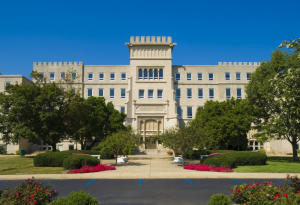Not only does the remodeled Westlake Hall offer current and future students an exciting new place to learn, it may also help maintain the environment for generations to come.
The major renovation of Westlake is currently seeking a gold level accreditation from the Leadership in Energy and Environmental Design (LEED) Accreditation board of the U.S Green Building Council (USGBC).
The LEED Accreditation was a result of USGBC’s creation in1993. It was designed as a voluntary and universal code to designing, constructing and maintaining sustainable buildings. Because buildings account for 65 percent of electricity consumption and 30 percent of the waste output in the United States, the USGBC wanted to promote environmentally-conscious practices.
“I think it’s great. The LEED system acknowledges that the university is making an effort to be sustainable,” said junior civil engineering major Becca Wagner. “A gold or silver level building is a great accomplishment that shows Bradley is being conscience of the world around it.
Having a minimum of silver for all future buildings is a great goal that I would be happy to see Bradley meet.”
Now that Westlake is completed it can be registered and submitted for possible accreditation. In this way LEED certification focuses on the design and construction in addition to sustainable operations throughout the building’s life.
LEED certification systems are point-based. Points can be earned from simple modifications, such as adding bike racks (1 point) to more complex analyses of optimizing energy performance (up to 10 points).
There are four levels of LEED certification: certified (40-49 points), silver certified (50-59 points), gold certified (60-79 points) and platinum certified (more than 80 points).
Westlake must meet the minimum conditions for energy conservation in order to receive any certified level. According to Planning Supervisor Kim Green, Westlake should achieve 10 to 12 percent energy conservation in addition to its other certification requirements.
“The categories by which Bradley intends to earn the majority of these points include the contractor and design consultants,” she said. “The contractor controls indoor air quality, use of regional materials and certified and low-emitting products. The design consultants are responsible for showing reduced water usage and increased energy efficiency.”
According to Bradley’s website, Westlake utilizes high-efficiency lighting, heating, ventilation, air conditioning, low-flow toilets and recycled building materials.
The recently finished Alumni Center has also been submitted for evaluation at a silver accreditation level.
Since its official implementation in 1998 the LEED Accreditation system has been adopted by 450 state and local governments, and LEED projects can be found in more than 110 countries. More than 100,000 projects have been completed with LEED Accreditation standards, including almost 300 in Chicago in the last year.
Gary Anna, vice president for business affairs, said Bradley will continue to pursue LEED Accreditation for at least a silver level.
“Our sustainability plan indicates the university’s goal is to have new construction be at least at a LEED silver level,” said Anna. “Westlake has been attempted at the gold level because of it being an educational building and because it is one of the two original buildings on campus.”







